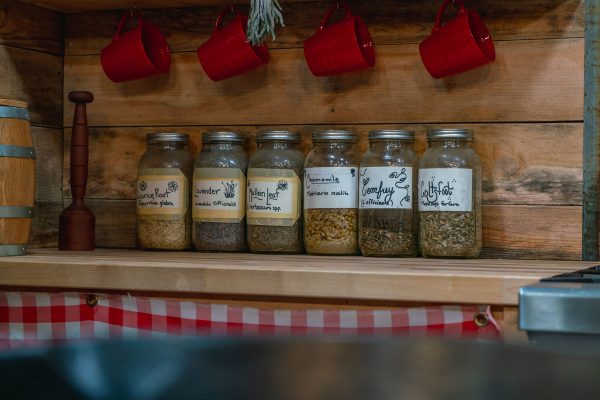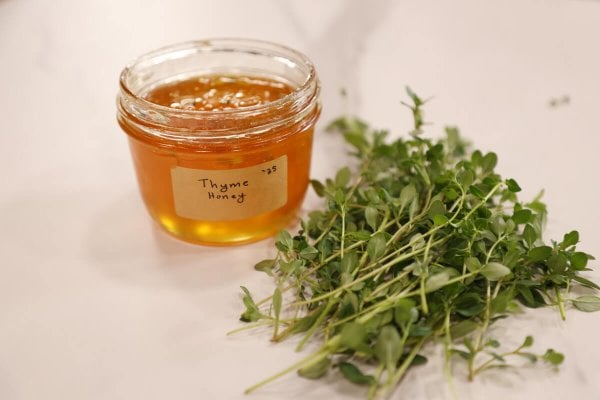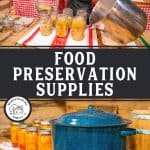

What preservation tools do we recommend for a beginner on a budget? What’s worth it, and what’s not? Keep reading for our best recommendations on how to get started with preservation and resiliency in the kitchen.
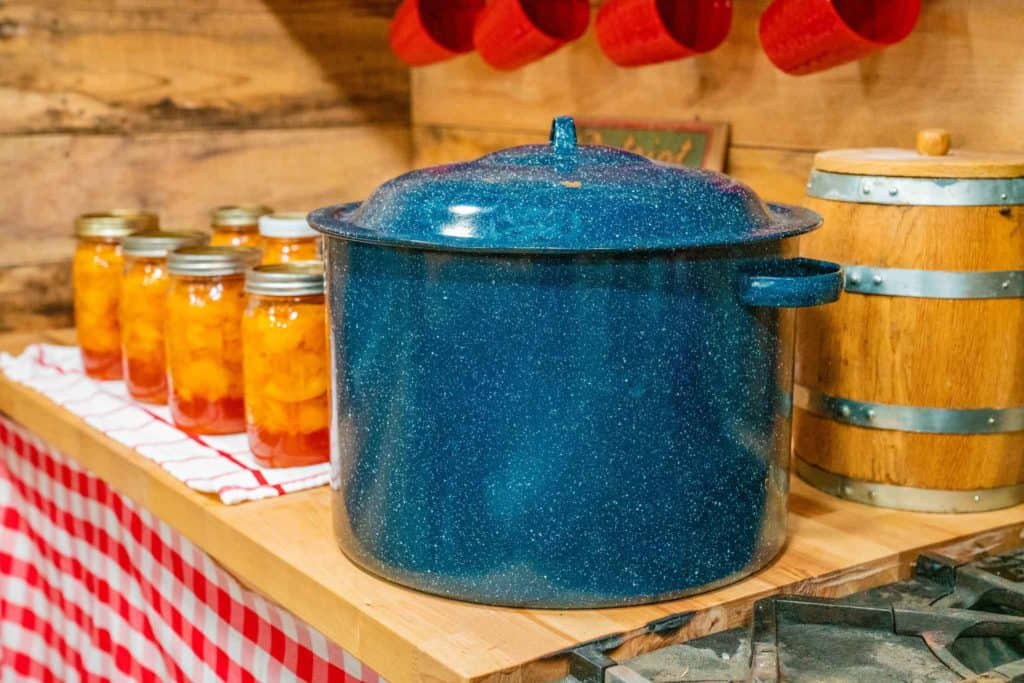
If you’re new to the gardening and food preservation movement that’s seemed to sweep the country the past couple of years, you may be wondering what items are most necessary for preserving food and which items aren’t.
You may not be ready to store a year’s worth of food (check out our pantry tour here!), but starting with something is better than nothing!
We’ve shared our tried and true preservation methods and discussed them in detail in our Preservation 101 series, so be sure to read through those posts for more information:
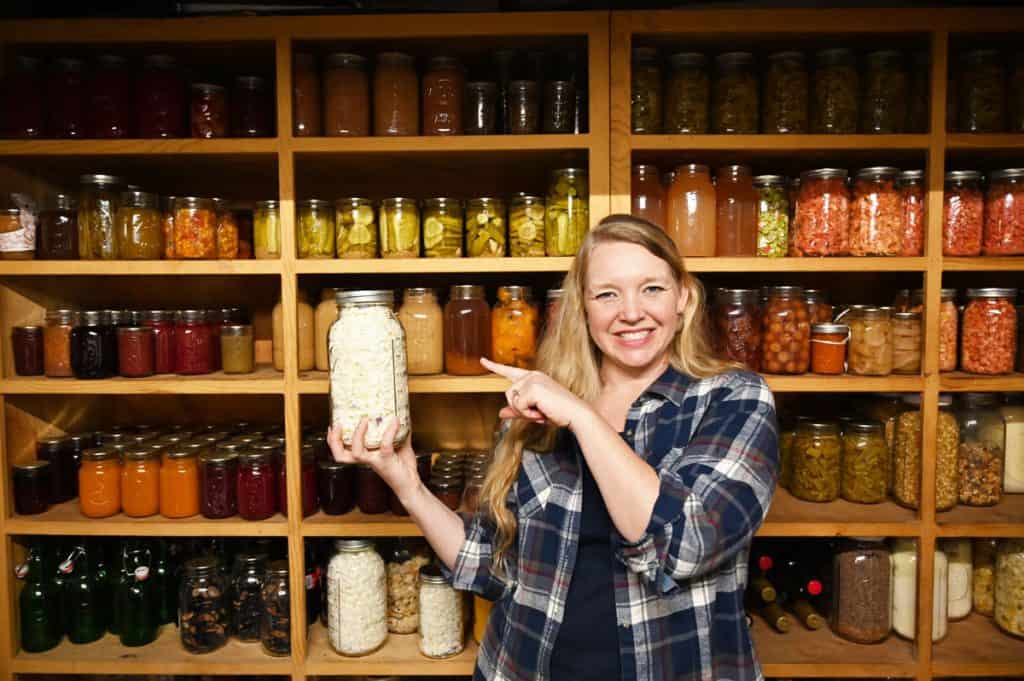
Becoming More Resilient
It’s a great idea to begin trying your hand at growing a garden and putting up your own food, but there are many methods of food preservation that take practice before the skill is mastered.
But we all have to start somewhere, and typically speaking, freeze-drying and pressure canning aren’t the two skills to begin with.
We’ve been practicing and honing our preservation skills for over 19 years now, and we’re at a place where we have our systems down, so we’re expanding our own skill sets as we’re able.
If we were just beginning, the methods and supplies listed below are where we would start.
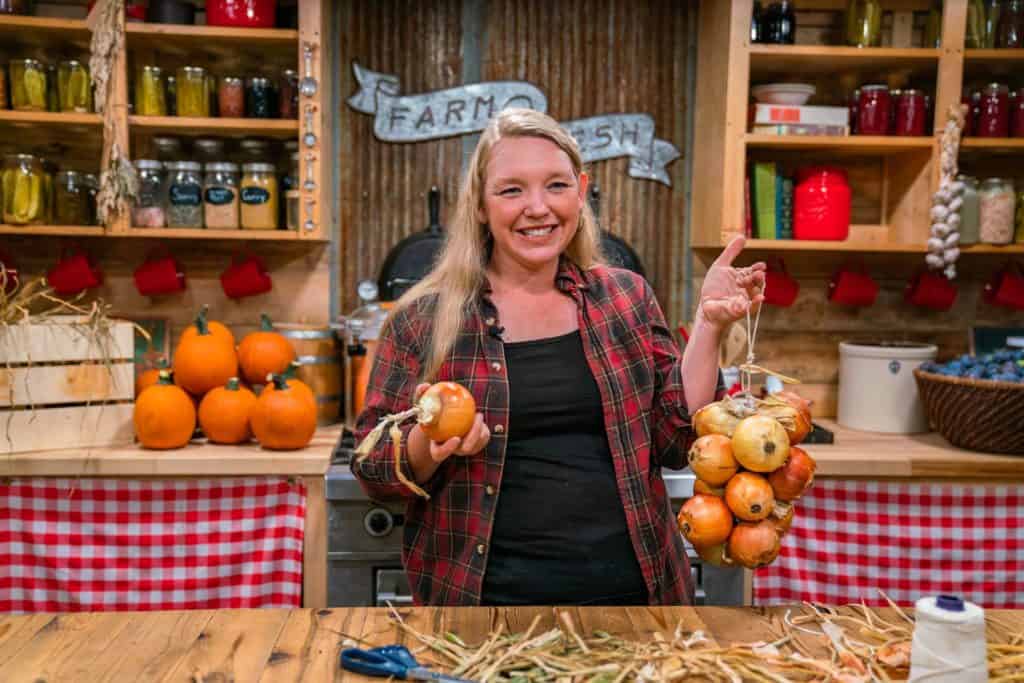
Preserving Doesn’t Have to be Expensive
Food preservation does NOT have to be expensive. Specifically, the natural forms of food preservation can actually be nearly free, but they’ll take a bit of practice and know-how.
For example, fermentation can be done in an old mayonnaise jar.
Dehydrating food can take place in a dry area of your food that gets a bit of airflow. You can also use your oven or even the sun!
You can use common storage areas like a cool basement, a root cellar, crawl spaces, etc. for storing foods like winter squash, onions, and other foods that don’t need anything special except a cool, dark location.
There are a lot of options for absolutely free preservation methods. But if I had to start from scratch on a low budget and I wanted to start building up my food preservation arsenal, here’s what I would do (in order).
To check out Homestead Iron gardening tools, visit their website and be sure to use code “homesteadingfamily” for 10% off at checkout.
Best Preservation Tools to Buy on a Budget
It may take you several years until you’re able to build up your food preservation tools, but this is the order I would recommend.
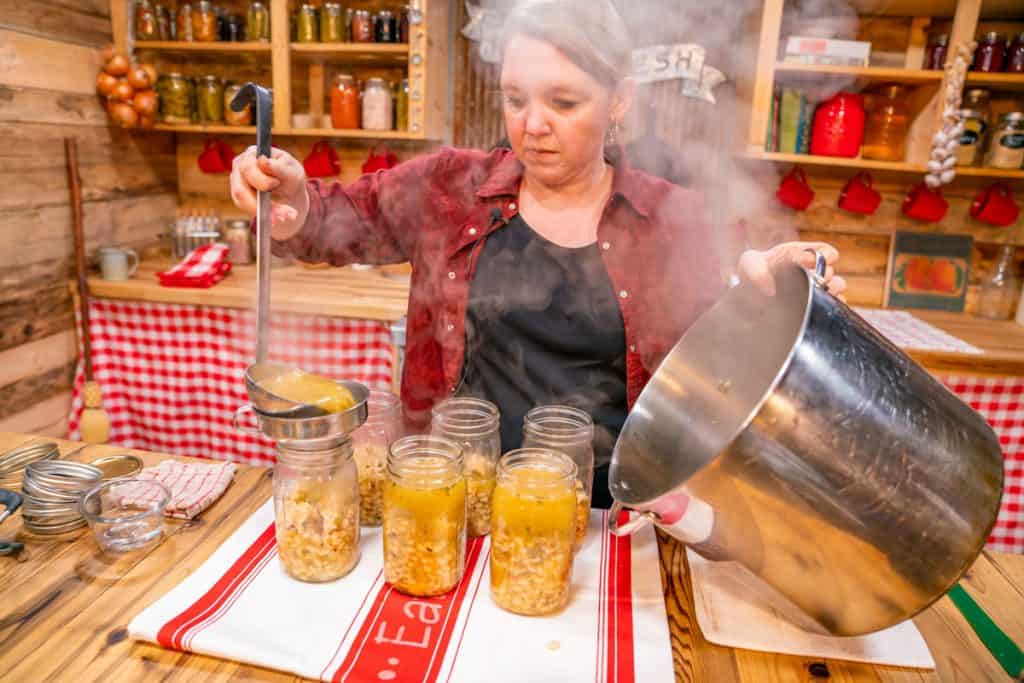
Heavy-Bottomed Stock Pot (With Lid)
Having a heavy-bottomed stock pot with a lid that’s at least five gallons will really come in handy for preserving foods.
Though you may not initially think of this as a preservation tool, you’ll actually find yourself using it all the time when making large batches of food to preserve. Whether it’s a sauce, jam, jelly, homemade pickles, or other forms of canning, you’ll need to have a large pot.
If you can find a pot that also comes with a rack at the bottom, it will double as a water-bath canner. If it doesn’t come with a rack, you can also buy after-market racks for a few dollars, or even use canning jar lids placed around the bottom. You just need something to lift those jars up off the bottom of the pot.
You may wonder if you need to get something as large as five gallons, and to that, I would say you can always cook one gallon of something in a five-gallon pot, but if you need to cook up a larger batch, it will take you five times as long in a one-gallon pot.
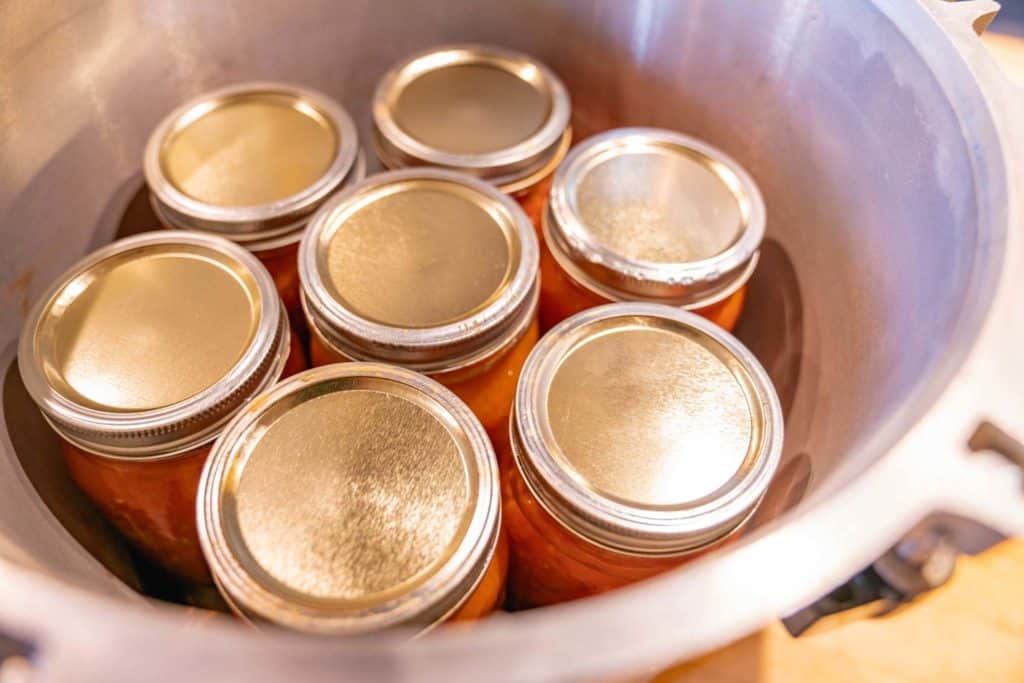
Canning Jars & Lids
Buy as many canning jars and lids as you can afford! Especially now with the supply-chain issues we’ve been seeing, if you can find canning jars in stock, it’s a good time to buy them!
With canning jars, you can water-bath or pressure can, store food in the jars (and eliminate your Tupperware), and even ferment in them.
I recommend getting a variety of sizes, but consider the items you’ll be preserving and start with the size jar you’ll need for that.

Pressure Canner
You know if you’ve followed us for very long, that I love my All-American Pressure Canner. As the name suggests, they are a ‘Made in the USA’ product. They are on the more expensive side when it comes to pressure canners, but they’re the kind of canner I’ll be passing down to my children someday.
With that being said, the Presto pressure canners work just fine. They tend to be more of a fuss because they need yearly checks with the pressure gauges and seals, but they’re a good entry point if you can’t afford an All-American.
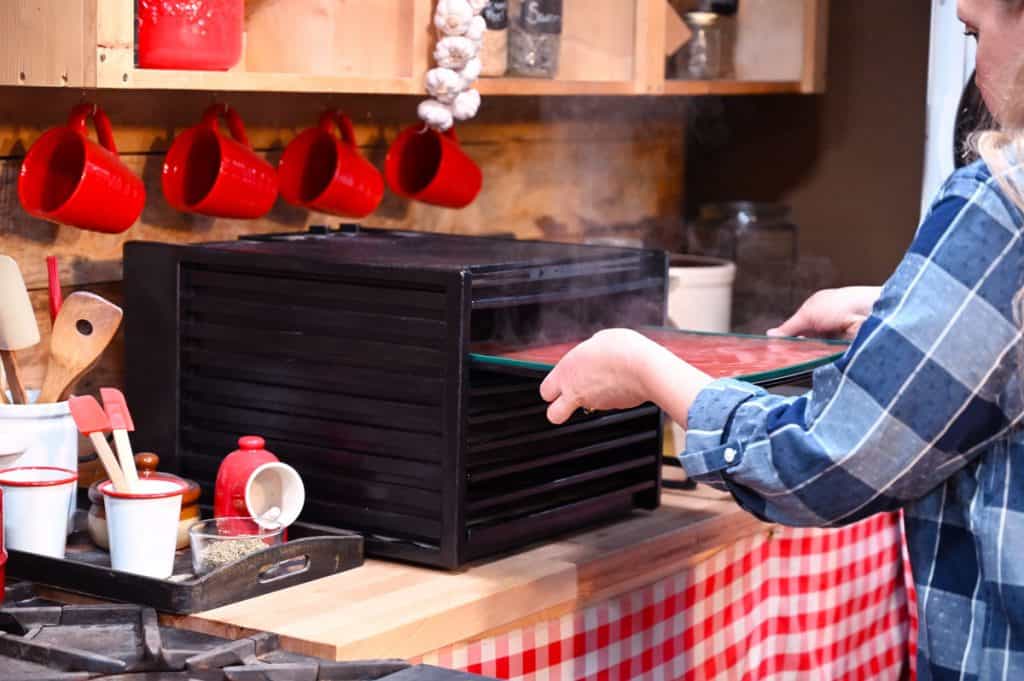
Dehydrator
Though you can dehydrate food in the oven, open-air, or in the sun, it’s hard to get a consistently good product without watching them very closely.
When you read about some of the Native American tribes who would dehydrate all the time, there was always a child or someone who was monitoring the food at all times. So unless you have the time to babysit your food, then we recommend getting an electric dehydrator. Especially because you’ll want to dehydrate some of your fruit into this amazing chewy and soft fruit leather.
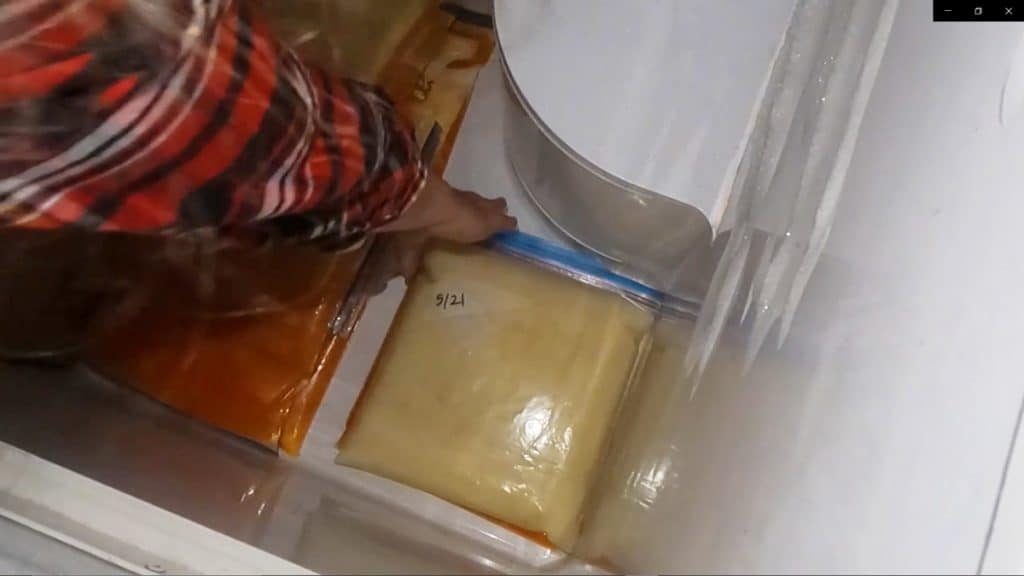
Freezer
You may not have a need to purchase an additional freezer if you already have one that’s large enough for your needs. However, if you’re wanting to get ahead on items like meat, or storing your preserved vegetables, I would definitely recommend purchasing an additional chest freezer (as large as you can afford).
All in all, if you’re serious about growing a garden and putting up food for long-term storage, building up your knowledge and skills for a more self-sufficient life, then we can’t recommend enough to start putting into practice some of these methods.
Other Posts You May Enjoy
- Learn to Homestead While on a Budget
- How Full Should My Canner Be When I’m Canning?
- Best Fermenting Vessels
- Pressure Canning Tips (+5 Common Mistakes to Avoid)
- Tips for a Busy Preservation Day
- Can You Reuse Canning Lids?
- How Long is Canned Food Good For?
- How to Get Ready for Canning Season
- Eating Well on a Budget (With Tiffany from Don’t Waste the Crumbs)
- Freeze-Dried vs. Dehydrated Foods (What’s the Difference?)











